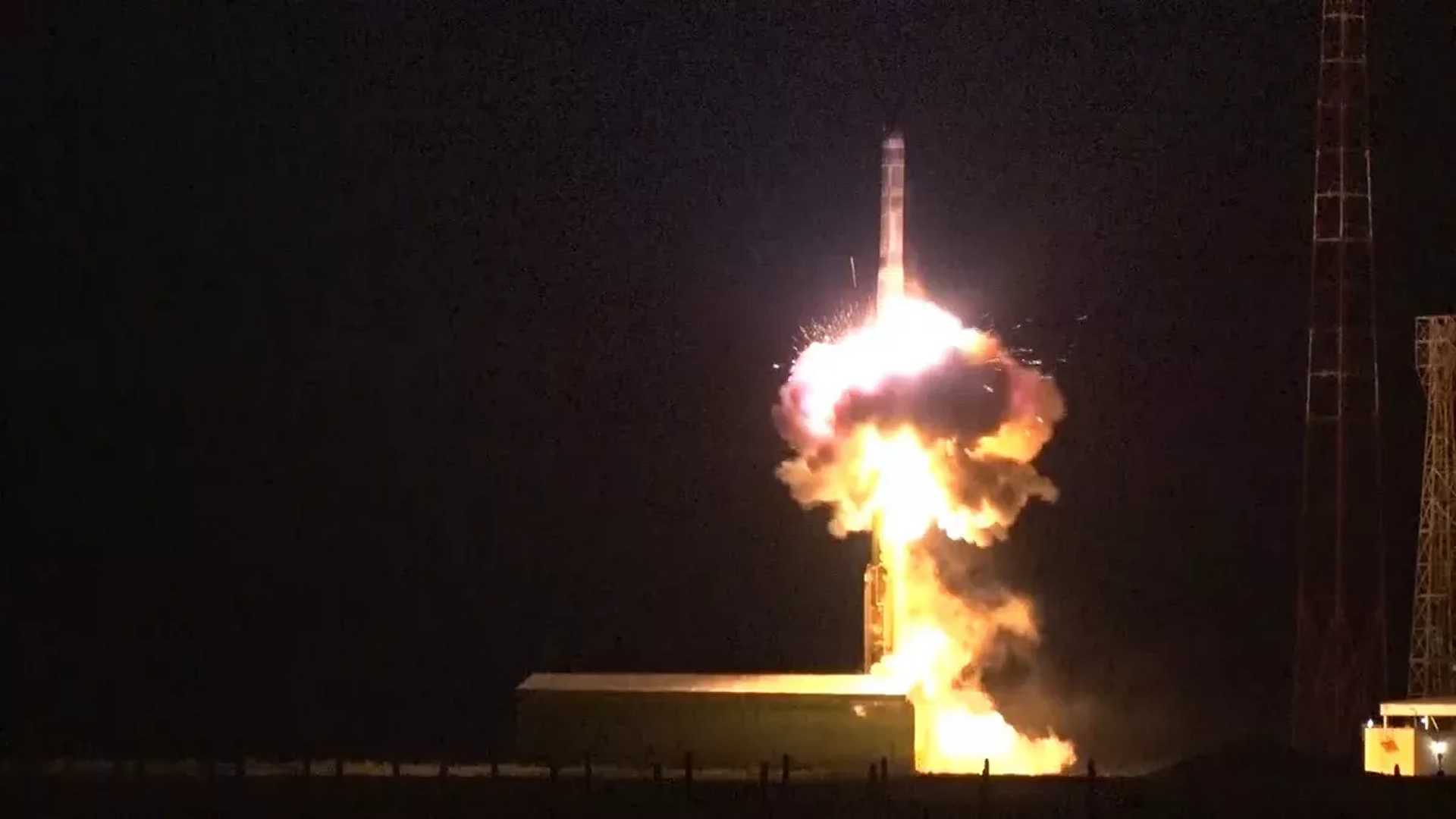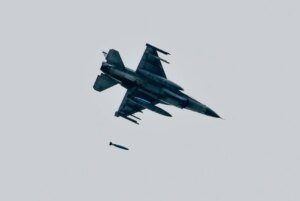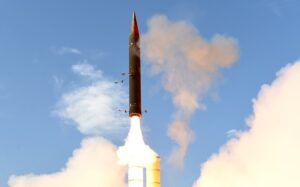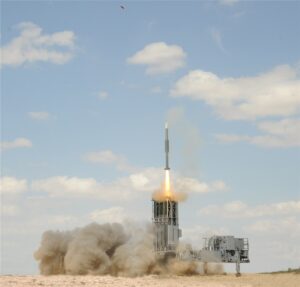俄罗斯宣布首次交付“奥列什尼克”弹道导弹,挑战美国在欧洲的远程优势
快速阅读: 2024年11月21日,俄罗斯首次使用Oreshnik导弹打击乌克兰Pivdenmash工厂,飞行速度达11马赫,携带非爆炸弹头,造成轻微损害。此举被视为对西方授权乌克兰使用远程导弹的回应,引发国际关注与谴责。
The Oreshnik missile, also designated as SS-X-34, is a solid-fueled, road-mobile, intermediate-range ballistic missile (IRBM) believed to be derived from the RS-26 Rubezh, which was previously excluded from Russia’s armament program. According to open-source data, the missile weighs approximately 40 tons, has an estimated throw-weight of at least 1,200 kg, and a range between 800 and 5,000 km. The system uses a mobile launcher based on the MZKT-79291 chassis or a modified version thereof, and was developed by the Moscow Institute of Thermal Technology with participation from several other Russian entities, including Titan-Barrikady, FCDT Soyuz, CNIIAG, OKB Proyektor, and Concern Sozvezdiye. It features a two-stage solid-fuel configuration, likely equipped with a multiple independently targetable reentry vehicle (MIRV) payload. Each missile is assessed to carry six individual warheads, each of which may be equipped with six submunitions or decoys. The MIRV configuration may use either a traditional post-boost vehicle (“bus”) or a newer design featuring individual guidance and propulsion systems for each warhead.
The first operational use of the Oreshnik missile occurred on November 21, 2024, during a strike against Ukraine’s Pivdenmash defense plant in Dnipro. The missile was launched from the Kapustin Yar test range and reportedly achieved a flight speed of Mach 11. The strike lasted approximately 15 minutes and occurred following a prior notification to the United States through established deconfliction channels. Ukrainian and U.S. sources reported that the missile carried inert or non-explosive warheads. Satellite imagery and local reports confirmed limited structural damage, including minor roof impacts at the industrial facility. The event followed prior warnings from U.S. intelligence to Ukraine and NATO allies about a possible significant Russian airstrike, leading to temporary closures of Western embassies in Kyiv. The missile was identified by serial numbers linking it to legacy Bulava missile components, and fragments of a post-boost propulsion system were recovered at the site. President Putin stated that the launch was in response to Western authorization for Ukraine to use long-range missiles like ATACMS and Storm Shadow against Russian territory.
Following the strike, Ukrainian President Volodymyr Zelensky described the attack as a significant escalation and a violation of the UN Charter. German Chancellor Olaf Scholz characterized it as a severe provocation and stated that Germany would not deliver Taurus cruise missiles to Ukraine to avoid further escalation. NATO’s Ukraine Council labeled the strike an attempt to intimidate civilians and Western supporters of Ukraine. Several international organizations and media outlets, including The Economist and the Institute for the Study of War, assessed the strike as part of a broader Russian campaign of psychological pressure, intended to increase the cost of Western support to Ukraine. Analysts from CSIS and other institutions noted that the use of MIRVs in conventional payloads remains uncommon due to accuracy limitations and high operational costs. They also observed that the missile’s flight profile, trajectory, and terminal phase would be difficult to intercept with Ukraine’s existing missile defense capabilities.
Military experts, including Maksim Starchak and Jeffrey Lewis, assessed that the Oreshnik system does not incorporate new or advanced technology beyond legacy Soviet and Russian missile developments. According to Lewis, the system consists of well-established components repurposed into a new configuration, and he estimated that no more than 10 percent of the design was new. Analysts highlighted that the use of kinetic-energy-only warheads traveling at hypersonic speed can result in localized damage, though the system’s military utility with non-nuclear payloads remains limited. According to Western analysts, the use of such a costly system for a limited physical effect likely reflects a political or strategic messaging function. This interpretation was reinforced by statements from CSIS and Chatham House experts, who emphasized the system’s symbolic value rather than battlefield effectiveness. Observers also noted the risk of strategic misinterpretation, as adversaries may respond to Oreshnik launches as if they were nuclear, given the missile’s configuration and range.
Reports in early August 2025 from Russian and international sources indicated that Russia is considering overseas deployment of the Oreshnik system. Military expert Alexander Stepanov suggested that locations such as Venezuela and Cuba could serve as forward basing options. He argued that such deployments would reinforce Russia’s military presence and provide extended strike coverage of the southern United States and Caribbean region. Stepanov also noted that serial production capabilities could allow for the delivery of dozens of units annually, covering multiple strategic sectors and possibly opening avenues for technology transfer to partners such as Iran, North Korea, and China. Although these countries maintain their own missile development programs, none are currently believed to possess a missile equivalent to Oreshnik. Meanwhile, Lockheed Martin is producing up to 60 HIMARS systems annually, with plans to increase output to 92, while the U.S. Department of Defense has placed orders for 32 Tomahawk missiles and Typhon launchers for NATO deployments.
The deployment of the Oreshnik system to Belarus fits into a broader Russian strategic framework that includes revisions to its nuclear doctrine and a series of agreements with Minsk. In late 2024, Putin and Lukashenko signed a treaty granting Belarus Russian security guarantees, including the potential use of tactical nuclear weapons. According to Belarusian statements, several dozen such weapons have already been deployed. The new Russian doctrine also allows the use of nuclear weapons in the event of an attack on Belarus with conventional means threatening its sovereignty. Russia’s exit from INF Treaty constraints has been formalized, with the Ministry of Foreign Affairs and Ministry of Defense both confirming that INF-related self-limitations no longer apply. Analyst Vasily Kashin stated that future deployment sites for systems such as Oreshnik would be selected based on specific operational characteristics, with northern and southwestern regions of Russia, including areas near NATO borders, as likely candidates. He also noted the historical precedent of deploying Pioneer IRBMs to Chukotka during the Cold War, capable of reaching parts of the continental United States.
(以上内容均由Ai生成)








